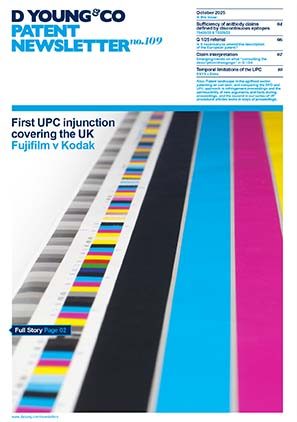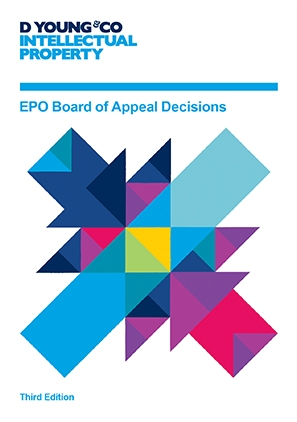UK High Court: Merck Sharpe & Dohme v Wyeth
Common general knowledge is instrumental in the UK High Court’s revocation of Wyeth’s UK vaccine formulation patent, whilst narrow claim construction leads to finding of non-infringement.
Merck Sharpe & Dohme Limited (MSD) has successfully revoked Wyeth LLC’s pneumococcal vaccine patent at the UK High Court (see below for a link to the full decision). The patent (EP(UK)2676679) covered Wyeth’s Prevnar 13® product which vaccinates against pneumococcal bacteria. The patent was found to be invalid for lack of inventive step because a number of steps were thought to be within the common general knowledge of the skilled team. Following a counterclaim for infringement, MSD’s V114 product was considered to be non-infringing due a narrow claim construction.
Pneumococcus & Prevnar 13®
Streptococcus pneumoniae, or pneumococcus, is a spherical bacterium having a polysaccharide capsule. More than 90 serotypes of pneumococcus have been identified, each having a different polysaccharide structure. These bacteria generally reside asymptomatically in the respiratory tract of healthy people but in vulnerable people, including infants and the elderly, they can become pathogenic and migrate to other locations causing diseases such as pneumonia, septicaemia and meningitis.
Prevnar 13® is a thirteen-valent polysaccharide vaccine against pneumococcus, which comprises purified polysaccharides from thirteen serotypes, each conjugated to a non-toxic diphtheria toxin variant (CRM197). This product is covered by a number of patents, including EP(UK)2676679, which forms the basis of the present High Court decision.
The granted patent
EP(UK)2676679 is based upon Wyeth’s discovery that agitation of the vaccine formulation during transport in siliconized containers causes silicone induced aggregation of the polysaccharide-protein conjugates. This aggregation can be prevented using a surfactant or an aluminium salt adjuvant.
Wyeth were granted a European patent which broadly covers this invention, with granted claim 1 reading as follows:
“1. A siliconized container means filled with a formulation which inhibits silicone induced aggregation of a polysaccharide-protein conjugate comprised in a siliconized container means, the formulation comprising (i) a pH buffered saline solution, wherein the buffer has a pKa of about 3.5 to about 7.5, (ii) an aluminum salt and (iii) one or more polysaccharide-protein conjugates wherein the polysaccharide-protein conjugate comprises one or more pneumococcal polysaccharides.”
Although the granted claims were limited to formulations comprising pneumococcal polysaccharide-protein conjugates with an aluminium salt, claim 1 encompassed any pneumococcal vaccine.
Amendments made during court proceedings
Wyeth opted not to defend the granted claims before the High Court. Instead, following the revocation action filed by MSD and a counterclaim for infringement, granted claim 1 was limited to require the presence of pneumococcal saccharide antigens from the thirteen serotypes found in Prevnar 13®. However, the broad functional language relating to “a formulation which inhibits silicone induced aggregation of a polysaccharide-protein conjugate” was maintained. Claim 1 as considered by the High Court read as follows:
“1. A siliconized container means filled with a formulation which inhibits silicone induced aggregation of a polysaccharide- protein conjugate comprised in a siliconized container means, the formulation comprising (i) a pH buffered saline solution, wherein the buffer has a pKa of about 3.5 to about 7.5, (ii) an aluminum salt and (iii) one or more polysaccharide-protein conjugates wherein the polysaccharide-protein conjugate comprises one or more pneumococcal polysaccharides, and wherein the one or more pneumococcal polysaccharides are a S. pneumoniae serotype 4 polysaccharide, a S. pneumoniae serotype 6B polysaccharide, a S. pneumoniae serotype 9V polysaccharide, a S. pneumoniae serotype 14 polysaccharide, a S. pneumoniae serotype 18C polysaccharide, a S. pneumoniae serotype 19F polysaccharide, a S. pneumoniae serotype 23F polysaccharide, a S. pneumoniae serotype 1 polysaccharide, a S. pneumoniae serotype 3 polysaccharide, a S. pneumoniae serotype 5 polysaccharide, a S. pneumoniae serotype 6A polysaccharide, a S. pneumoniae serotype 7F polysaccharide and a S. pneumoniae serotype 19A polysaccharide.”
As well as limiting claim 1, Wyeth chose to add an independent use claim to the granted patent. Use claim 16 considered by the High Court read as follows:
“16. Use of a formulation to inhibit silicone induced aggregation of a polysaccharide-protein conjugate comprised in a siliconized container means, the formulation comprising (i) a pH buffered saline solution, wherein the buffer has a pKa of about 3.5 to about 7.5, (ii) an aluminum salt, and (iii) one or more polysaccharide-protein conjugates, wherein the polysaccharide-protein conjugate comprises one or more pneumococcal polysaccharides, and wherein the one or more pneumococcal polysaccharides are [the thirteen serotypes of the product claim].”
Interestingly, use claim 16 was added to the UK patent following a finding by the US Federal Circuit that the use claim was valid but the broad product claim was obvious in view of prior art also cited against the UK patent.
Novelty – product v use claims
The product claims considered by the High Court are drafted in a slightly unusual manner and require the formulation within the siliconized container means to include a functional feature as well as three physical features. More specifically, the product claims require the formulation to inhibit silicone induced aggregation of a polysaccharide-protein conjugate, and to include a pH buffered saline solution, an aluminium salt and polysaccharide-protein conjugates from thirteen pneumococcal serotypes.
To simplify both disclosure and the assessment of novelty, Birss J made an order before the High Court proceedings which states that “in respect of each of the claims of the patent in suit, that if the physical features of that claim are satisfied, then the functional technical feature (i.e. inhibition of silicone induced aggregation of a polysaccharide-protein conjugate) is satisfied for that claim.” Therefore, if all of the physical features required by the claims are present in the prior art, the function requirement is considered to be fulfilled.
WO2006110381 contains all of the physical features of the product claims and these claims were therefore found to lack novelty. This was not resisted by Wyeth.
In contrast, Wyeth successfully defended novelty of the use claims using MOBIL (G02/88). This decision of the Enlarged Board of Appeal at the European Patent Office (EPO), which is followed by the UK courts, confirms that patent claims are available for a new use of an old product even if carrying out the previous use would have inadvertently meant that the skilled person was achieving the benefit of the invention. MSD could not demonstrate that the prior art had actually disclosed the use of an aluminium salt for the purpose of inhibiting silicone induced aggregation of a polysaccharide-protein conjugate. As such, the use claims were considered novel.
Inventive step - common general knowledge
More than two thirds of the present decision is devoted to an in-depth discussion of the common general knowledge and the skilled team relevant to the field, as required to assess inventive step under the Pozzoli framework.
It was decided that the skilled team would comprise a vaccinologist and a skilled formulator, and both parties provided expert witnesses in these fields. Since vaccine antigens are often proteinacious it was considered that this skilled team would also have knowledge relating to the protein field generally.
Meade J commented extensively on the various textbooks, regulatory evidence and articles provided by both parties as evidence of the common general knowledge. However, he was openly critical of the formulator expert witnesses, who often failed to support their assertions with documentation.
Inventive step was assessed using de la Pena (2004), which discloses the 13-valent pneumococcal vaccine and suggests that Wyeth had progressed this vaccine to “a very advanced stage of study”. De la Pena is silent on the use of an aluminium salt adjuvant, a buffer or a siliconized container and does not suggest that a siliconized container could cause aggregation problems upon agitation. On the face of it, there appear to be a number of steps required to move from de la Pena to the claimed invention, not least the identification of the aggregation problem which was not taught by the prior art. Wyeth accepted that it would be immediately apparent from the common general knowledge to utilise a siliconized container means, a pH buffered saline solution and an aluminium adjuvant in a vaccine formulation. These concessions were described as “realistic to the point of inevitable” (paragraph 328).
The only remaining feature lacking from de la Pena was to identify and solve the problem of aggregation using an aluminium salt adjuvant. Although the problem of agitation-induced aggregation was not taught by the prior art, it was considered that this problem would be apparent to a skilled formulator and that the solution formed part of the common general knowledge. This was summarised by Judge Meade at paragraph 345: “standing back, as I consider I should, I think that the claims of the Patent are about taking forward a very attractive proposal (the 13v vaccine in de la Pena) by routine means, including solving a modest CGK problem (aggregation caused by silicone) in a way which was CGK (a surfactant).”
Claim construction & infringement
Despite finding Wyeth’s patent invalid, the High Court went on to consider infringement. A narrow construction of claim 1 led to the court’s finding that MSD’s V114 pneumococcal vaccine would not infringe Wyeth’s patent.
V114 is a 15-valent pneumococcal vaccine which is currently undergoing phase 3 clinical trials. This vaccine includes polysaccharide-protein conjugates from the thirteen serotypes found in Wyeth’s Prevnar 13® product as well as additional polysaccharide-protein conjugates from pneumococcal serotypes 22F and 33F.
Amended claim 1 considered by the High Court states that “the one or more pneumococcal polysaccharides are …”. Here the term “are” was interpreted narrowly, permitting the presence of polysaccharide-protein conjugates from only the thirteen recited pneumococcal serotypes, and excluding the presence of polysaccharide-protein conjugates from additional serotypes. In this instance the term “are” was considered akin to the term “consisting”, which is generally accepted to be a narrow term, rather than open term “comprising”. The Patentee’s use of the open term “comprising” at several other points within the granted claims was considered to be an “obvious and powerful|” contrast to use of the term “are” within the last clause (paragraph 259). This, together with Judge Meade’s suggestion that the addition of polysaccharide-protein conjugates from other serotypes could jeopardise the efficacy of the vaccine, led to the term “are” being construed narrowly.
The narrow construction of the term “are” in claim 1 led to a finding of non-infringement for MSD’s V114 product. Although not discussed in the decision, V114 would surely have been found to infringe claims which were not limited to polysaccharides from particular serotypes, such as granted claim 1. However, Wyeth confirmed at the outset they would not seek an injunction following any finding of infringement, but would merely seek compensation.
Lessons
The present decision emphasises the value of including use claims in a patent, even if the invention largely relates to a product. As the functional requirement of a product claim may be considered to have been met if all of the physical features of a claim are present in the prior art, the effect of MOBIL (G02/88) increases the threshold required to establish that a corresponding use claim would lack novelty.
Upon considering inventive step, the present decision confirms the importance of the skilled team and the common general knowledge when applying the principles of Pozzoli. This was considered in great detail, and the expert witnesses were heavily criticised for not supporting their statements on this matter with documents demonstrating the common general knowledge. All parties would be wise to bear this in mind when offering experts to the UK courts.
Inventive step in the present case rested upon consideration of a single document (de la Pena) in view of the common general knowledge. There were a number of steps required to get from the prior art to the invention, and the issue of agitation-induced aggregation in siliconized containers was not even identified in the prior art. However, the aggregation problem and the multiple steps required to arrive at the solution were considered to be merely points of common general knowledge. This emphasises that the number of differences from the prior art is immaterial for the assessment of inventive step. In order to be considered inventive at least one of the differences must not have been obvious from the prior art when considered in light of the common general knowledge, which in this case was considered extensive.
It is apparent from the present decision that the narrow construction applied to the term “are” in claim 1 was primarily due to the use of the open term “comprising” at other points within the claims. This demonstrates the absolutely importance of consistent claim drafting. At the drafting stage the meaning of any terms used in a claim, or elsewhere in a specification, should be scrutinised and alternative terms should only be used when an alternative meaning is required. Any potentially ambiguous terms should be defined in the specification.
European perspective
The European patent from which EP(UK)2676679 was derived is currently undergoing opposition proceedings before the EPO, having been opposed by MSD as well as Sanofi and SK Bioscience Co. In its broadest position in these proceedings Wyeth is currently seeking to maintain the granted product claims, in contrast to the UK case where the claims were limited to polysaccharide-protein conjugates from the thirteen serotypes included within Prevnar 13®. Use claims have been added in an auxiliary claim request. Oral Proceedings are due to take place before the Opposition Division in March 2021. It will be interesting to see whether the Patentee fairs better before the EPO with its problem and solution approach to assessing inventive step than before the UK High Court.
Link to full decision (BAILII)
Merck Sharp & Dohme Ltd v Wyeth LLC [2020] EWHC 2636 (Pat) (15 October 2020).
Read more

